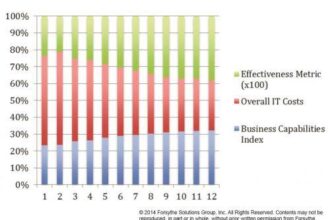It can be hard to discern where and how customer loyalty is forged, with so many external forces influencing customer sentiment like communication, retail merchandising and the right messaging. Clustering or Decile analysis may be used to segment customers based on their loyalty to a brand and identify those who have lost trust in it. Loyalty may be defined as the percentage of times that a customer purchases a certain brand of product compared to all brands in the same product category. A measure of brand loyalty may be required to gauge the response of buyers to a new campaign or other event in the marketplace. Performing a loyalty analysis requires a way of linking each transaction to the following: an identifiable customer with a loyalty card, website cookie, smart card, or other unique identifier.
As an example, let’s assume that a retailer sells a store brand of ice cream, ‘JELLO’, as well as two competitor brands named ‘PUDDING’ and ‘FUDGEO’, respectively. The store would like to evaluate customer loyalty to its JELLO brand after several thousand containers had to be recalled over a one-and-a-half month period. The retailer’s ‘BUYER’ loyalty card allows each ice cream purchase to be linked to a specific customer, and a random sample of customers has revealed the following:
– – the average customer purchases a container of ice cream once a week
– – time of year has no impact on whether a customer buys JELLO versus either PUDDING or FUDGEO brand of ice cream
The above knowledge is important for determining how many periods of data are required to evaluate each customer’s loyalty to the JELLO brand. At least two months of data before, during and after the product recall took place is required for this analysis. For each customer, a ‘JELLO LOYALTY’ variable may be created for the three two-month periods: one for before, during and after the product recall. LOYALTY is calculated by dividing the number of times that a JELLO ice cream is purchased by the total number of ice cream purchases (JELLO, PUDDING and FUDGEO) for each two-month period. One final step is required before conducting a decile or clustering analysis: creating a ‘JELLO LOYALTY CHANGE’ variable for each customer. This variable captures the degree to which each store customer’s JELLO ice cream purchases is more, less or the same after the product recall.
Once the JELLO LOYALTY CHANGE variable is run through a clustering algorithm or decile analysis, loyal JELLO brand customers will be revealed. These are buyers who continue to purchase the same percentage of JELLO brand ice cream versus others after the product recall. Clustering may reveal an additional segment of customers who did change their behavior as a result of the JELLO product recall. They require attention from the marketing department in order to re-establish a trust in the JELLO brand. Other JELLO ice cream customers may have stopped buying during the product recall period but continued their previous purchasing pattern in the two months immediately after. This group should be treated the same as other groups from whom revenue was more permanently lost.








